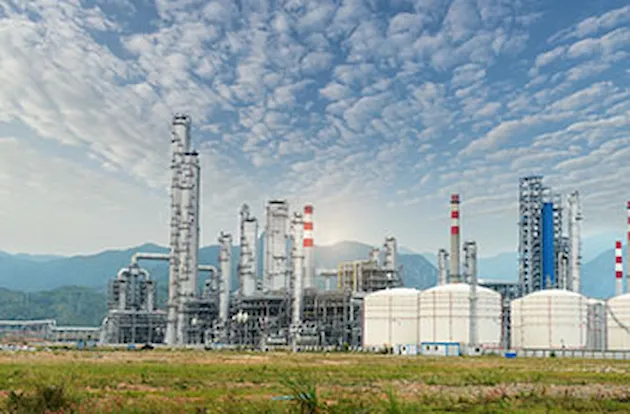

The rise of hydrogen as a key material in the energy sector demands a shift in our approach to safety. DNV has released a guidance document on using Phast™ and Safeti for consequence and risk analysis in hydrogen loss of containment scenarios. This guidance document details phases from discharge to consequences such as jet fires, fireballs and boiling liquid expanding vapour explosions (BLEVEs), phases which are crucial for simulating hydrogen behaviour.
This page delves into the latest guidance on hydrogen, highlighting key considerations for modelling.
Addressing dynamic challenges in hydrogen simulation
While the capability to simulate hydrogen releases in Phast and Safeti has been around for years, the complexities that hydrogen simulations present are constantly evolving. New areas of uncertainty emerge while ongoing research keeps best practices dynamic. There are also additional safety challenges related to storage of liquid hydrogen (LH2) at high pressures and cryogenic temperatures.
Hydrogen's unique physical properties - wide flammability range, low ignition energy and high flame speed - set it apart from traditional fuels such as methane and propane, necessitating tailored methodologies for risk and consequence modelling.
Enhancing hydrogen safety with the Miller jet fire model
One key area of work in Phast and Safeti is the inclusion of the Miller jet fire model. This was introduced in Phast and Safeti 8.6 and became the default for hydrogen vapour releases in Phast and Safeti 8.9. Developed by Derek Miller at Air Products, this model enhances predictions of thermal radiation from hydrogen jet fires. It represents the flame as a line source with two segments, accounting for uplift and wind, leading to more accurate predictions for vapour hydrogen jet fires. Validation has shown the Miller model produces good radiation predictions for vapour hydrogen jet fires, as shown below for horizontal hydrogen jet fires.
Validation of hydrogen explosion modelling against experiments
The PRESLHY project, a significant European research initiative on the safe use of liquid hydrogen, conducted 23 explosion tests in congested settings. These tests have informed recommendations in Phast and Safeti for modelling such scenarios. For regions with low levels of congestion, it is recommended to use Multi Energy (ME) blast curve 5 for predicting explosions. Conversely, highly congested regions may face high overpressure-level explosions and potential deflagration-to-detonation transitions (DDT), involving the entire cloud.
These findings validate Phast and Safeti’s predictions using the ME and Baker-Strehlow-Tang (BST) models, confirming that the Guidance for the Application of the Multi-Energy method (GAME) correlations, developed for hydrocarbon vapour cloud explosions, can also apply to hydrogen explosions in congested areas.
Hydrogen risk assessment: considerations and methodologies
Risk assessment for hydrogen facilities involves careful consideration of factors such as frequency, ignition probabilities and event tree analysis. Unlike traditional quantitative risk assessments (QRAs) that primarily used process and pipeline frequency data from the Hydrocarbon Release Database (HCRD), the unique characteristics of hydrogen, such as high vapour pressures, call for the use of hydrogen-specific database, such as the Hyram frequencies.
Ignition probability, considered a key risk factor, is treated differently in Safeti software, which assigns hydrogen higher immediate ignition probabilities in alignment with the Dutch legislation, although users can tailor these probabilities. Additionally, Safeti’s event tree analysis considers detonation risks, allowing for modelling of various delayed ignition outcomes, from flash fires to full detonations, ensuring a comprehensive assessment of hydrogen’s unique risks.
Adapting safety measures for the future of hydrogen
As research continues to shape best practices, staying updated with the latest findings and adapting approaches accordingly is crucial. Hydrogen safety is an evolving field where ensuring the highest safety standards requires flexibility and continuous learning.
To embrace hydrogen in the energy transition, adapting our consequence and risk assessment tools is essential. The latest guidance on Phast and Safeti, along with other ongoing activities, serves as a roadmap for navigating these changes, ensuring that safety remains paramount as we enter a new age of energy.
To support our software users, we have produced a guidance document on modelling hydrogen loss of containment scenarios, available in our Knowledge Centre (login required). The latest guidance on Phast and Safeti, along with other ongoing activities, serves as a roadmap for navigating these changes, ensuring that safety remains paramount as we enter a new age of energy.
Sources:
Schmidchen, U., 2009. Hydrogen safety facts and myths,3rd International Short Course and Advanced Research Workshop “Progess in Hydrogen Safety”, Belfast, 27th April – 1st May 2009, Northern Ireland, UK
Explore our software solutions:
Discover applications of our software:
CO2 consequence and risk modelling
Guidance on modelling carbon dioxide (CO2) releases using using Phast and Safeti software.
Accident & incident investigation
Assess hazardous material releases, identify root causes, and develop preventive measures using the Phast software.
Consequence estimation
Perform comprehensive consequence analysis and visualization for safety studies such as HAZOP, HAZID, PHA, and LOPA using the Phast software.
Regulatory compliance
Evaluate and manage consequence and risks associated with hazardous materials and operations for regulatory compliance using the Phast and Safeti software.
Emergency response
Simulate consequences from loss of containment scenarios to aid in the development of effective emergency response plans using the Phast software.
Facility siting & occupied buildings risk assessments
Support operators in conducting Occupied Buildings Risk Assessments (OBRA) for major hazard installations using the Safeti software.

